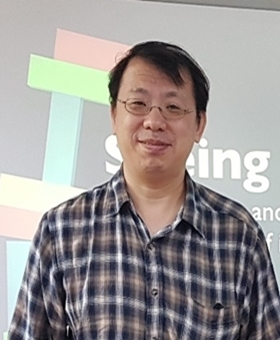單位介紹
陳建中
Chien Chung Chen

職稱:
國立臺灣大學心理學系 特聘教授
信箱:
c3chen@ntu.edu.tw
研究專長:
空間視覺與色彩視覺的神經機制與數理模型、大腦功能造影(含核磁共振功能造影與視覺引發腦電位)
Major Research Interests
Representative Publications
My research roughly follows three lines. The first focuses on the long-range interaction in the early and middle vision. I developed a dual-masking paradigm for investigating interaction between neural mechanisms tuned to different locations. With this paradigm, I then further investigated the effects of lateral mask in orientation, phase, position, the second order information and uncertainty effects on long-range interaction and their neurophysiologic basis of the long range interaction with fMRI and ERP. In addition to experimental paradigm, based on the empirical results, I also developed a computational model to explain the long-range interaction effect.
The second line of research is on perceptual grouping and the spatial configuration effect in form and object perception. This is actually an extension of the first line of research. I investigated many image factors to establish the spatial configuration effect on object perception. From here, I was able to develop a computational theory for perceptual grouping and its consequence in object perception. Recently, we developed a paradigm with symmetry and triple Glass patterns that allows us to quantitatively assess the strength of different Gestalt perceptual organization laws at both behavioral and neurophysiolocal levels.
The third line of the research concerns with 3D perception and its effect on 2D perception. We identified the interaction between disparity and pictorial cues in perceived depth. We were able to show not only how 2D pattern can affect the perceived depth but also how 3D structure can affect 2D form perception.
The second line of research is on perceptual grouping and the spatial configuration effect in form and object perception. This is actually an extension of the first line of research. I investigated many image factors to establish the spatial configuration effect on object perception. From here, I was able to develop a computational theory for perceptual grouping and its consequence in object perception. Recently, we developed a paradigm with symmetry and triple Glass patterns that allows us to quantitatively assess the strength of different Gestalt perceptual organization laws at both behavioral and neurophysiolocal levels.
The third line of the research concerns with 3D perception and its effect on 2D perception. We identified the interaction between disparity and pictorial cues in perceived depth. We were able to show not only how 2D pattern can affect the perceived depth but also how 3D structure can affect 2D form perception.
Representative Publications
- Chen, C. C., Foley, J. M. & Brainard, D. H. (2000). Detection of chromoluminance patterns on chromoluminance pedestals I: Threshold measurements. Vision Research, 40, 773-788.
- Chen, C. C. & Tyler, C. W. (2001). Lateral sensitivity modulation explains the flanker effect in contrast discrimination. The Proceedings of the Royal Society (London) Series B, 268, 509-516.
- Chen, C. C.*, Kao, K. C. & Tyler, C. W. (2007). Face configuration processing in the human brain: the role of symmetry. Cerebral Cortex, 17, 1423-1432.
- Chen, C. C. (2014). Partitioning two components of BOLD response suppression in flanker suppression. Frontiers in Neuroscience, 8:149.
- Chang, A., Chen, C. C.*, Li H. H. & Li C.S.R. (2015). Perigenual anterior cingulate event-related potential precedes stop signal errors. NeuroImage, 111,179-185.
